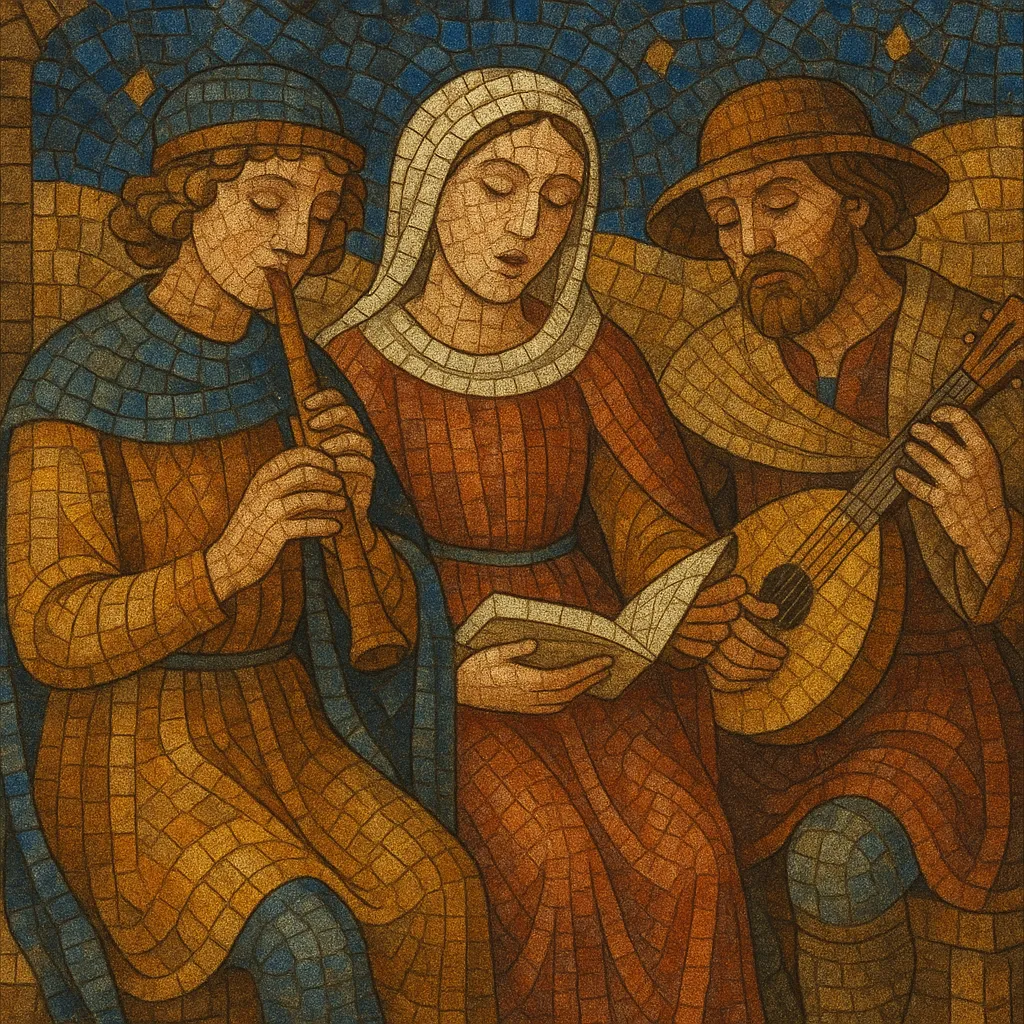Villancico is an Iberian song form that emerged in late medieval Spain and flourished during the Renaissance and Baroque eras. Originally a secular, vernacular song associated with rural or popular themes, it evolved into a predominantly sacred genre performed in churches and cathedrals—especially around Christmas.
Structurally, a villancico typically alternates a recurring refrain (estribillo) with one or more stanzas (coplas), often in lively, dance-like meters. Texts may be in Spanish or Portuguese and sometimes incorporate dialects and topical characters (for example, negrillos, pastorcillos), while the music ranges from simple strophic tunes to richly scored polychoral works with instrumental accompaniment.
Villancico developed on the Iberian Peninsula from medieval vernacular song practices. Early examples appear in Spanish cancioneros, with figures like Juan del Encina helping codify the form. Although originally secular and connected to rural or courtly life, the genre quickly attracted composers who wrote in polyphonic style, aligning it with the sacred choral tradition.
By the 16th century, villancicos were increasingly adopted for liturgical and para-liturgical occasions—especially the Matins for major feasts such as Christmas. Composers like Francisco Guerrero and, later, Sebastián Durón wrote villancicos that combined memorable refrains, strophic verses, and vibrant rhythms. In the Baroque period, instrumental continuo (organ, harp, guitar) and ensembles (violins, bajón, sacabuches) became common, and polychoral textures flourished.
With Spanish and Portuguese colonial expansion, the villancico took root in cathedrals across New Spain and South America. Composers such as Juan Gutiérrez de Padilla, Gaspar Fernández, Juan García de Zéspedes, Antonio de Salazar, and Manuel de Sumaya produced villancicos that reflected local languages, rhythms, and devotional practices. Subgenres like the "negrillo" used stylized dialect and syncopated rhythms, illustrating cultural exchange in colonial sacred music.
In the 18th and 19th centuries, changing tastes favored Italianate opera, oratorio, and new devotional styles, and the villancico’s central role diminished. However, the term persisted in popular usage to denote Spanish-language Christmas carols. In the 20th and 21st centuries, early music scholarship and historically informed performance have revived interest in original Renaissance and Baroque villancicos, leading to new editions and recordings.


